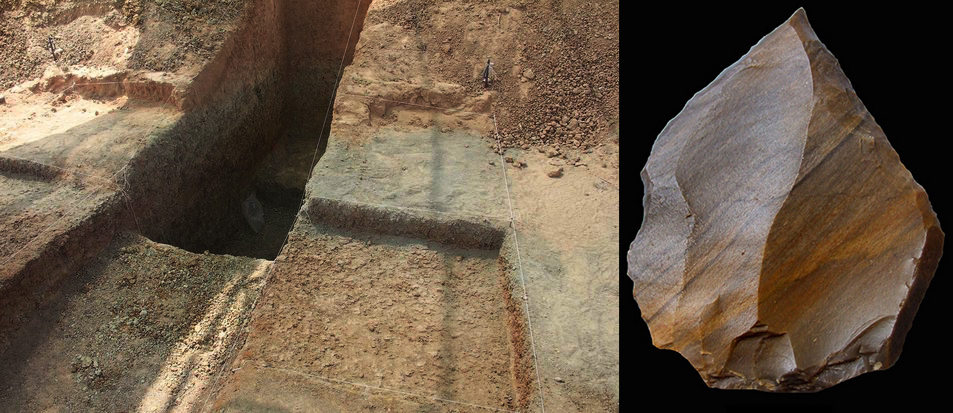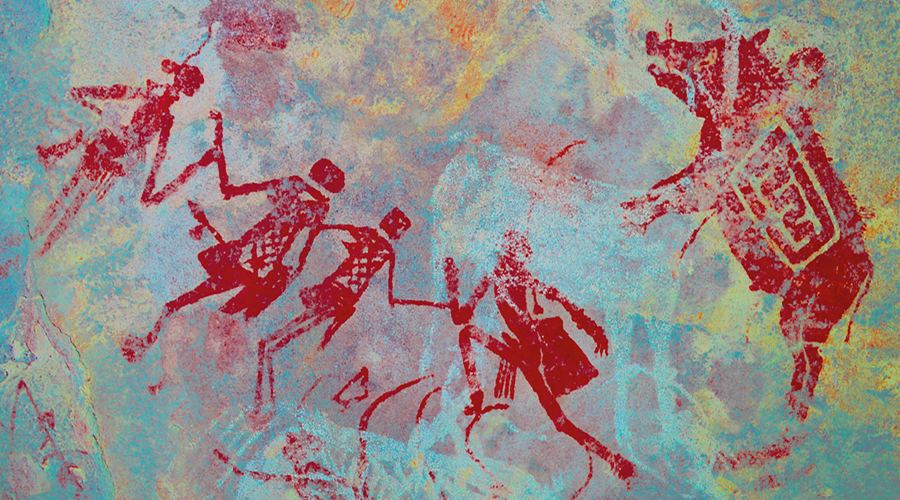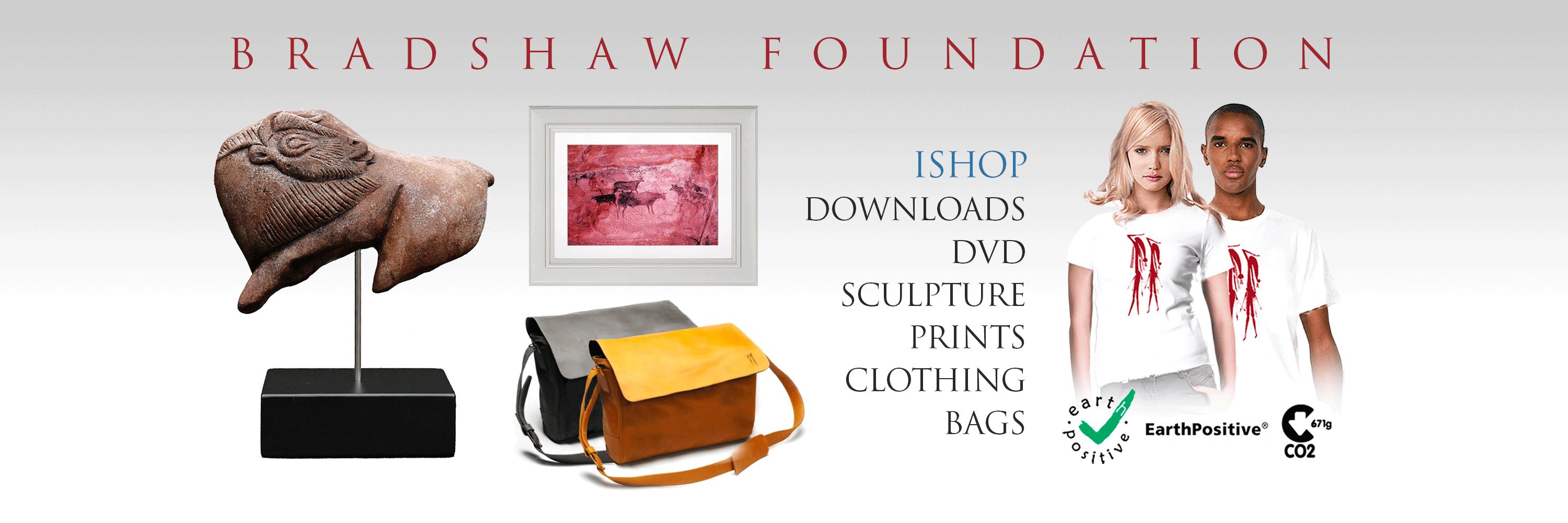


An article on IranDaily - Palaeolithic Mirak findings point to Neanderthal life - reports on the archaeological studies in the Palaeolithic site of Mirak in the Semnan province of Iran, suggesting evidence of Neanderthal life.

Levallois point at Mirak
The Mirak archeological site is located on the northern edge of the central desert known as 'Dasht-e Kavir', where research began in 1985. Results obtained from the 2009 excavation indicate that Mirak is among the largest open-air Paleolithic sites in Iran, possibly in the Middle East.
Mirak holds the longest period of settlement during the Middle Paleolithic era (about 250,000 to 40,000 years ago) as well as the Upper Paleolithic era (about 40,000 to 18,000 years ago). The Neanderthal presence is attributed to the Middle Paleolithic, a period dating back to 50,000 years ago as suggested by Iranian archeologists Hamed Vahdati-Nasab and Shirin Torkamandi. This is based on remnants including a flake-based production, significantly Levallois tools typical of the Mousterian era, and the near-total absence of Upper Paleolithic diagnostics. The archaeological survey has located a vast lithic scatter, extending over some 4 hectares.
An Iranian-French archaeological team, headed by Vahdati-Nasab, launched a new phase of excavation in July 2015, seeking to highlight unknown aspects of the life of the Neanderthals in Iran. Until now, most Paleolithic sites excavated in Iran have been in caves and rock shelters, the majority of them located in the Zagros Mountains; this is the first time such an operation has been conducted on an open-air site.
Visit the Rock Art of the Middle East Archive:
http://www.bradshawfoundation.com/middle_east/index.php
Visit the Origins section for Palaeolithic tools:
http://www.bradshawfoundation.com/origins/oldowan_stone_tools.php
by Bradshaw Foundation
Monday 04 December 2023
by Bradshaw Foundation
Friday 30 June 2023
by Bradshaw Foundation
Thursday 06 April 2023
by Bradshaw Foundation
Thursday 24 November 2022
by Bradshaw Foundation
Tuesday 27 September 2022
by Bradshaw Foundation
Thursday 08 September 2022
by Bradshaw Foundation
Tuesday 19 July 2022
by Bradshaw Foundation
Monday 06 June 2022
by Bradshaw Foundation
Friday 11 March 2022
by Bradshaw Foundation
Wednesday 02 March 2022
by Bradshaw Foundation
Thursday 26 August 2021
by Bradshaw Foundation
Monday 16 August 2021
by Bradshaw Foundation
Tuesday 06 July 2021
by Bradshaw Foundation
Thursday 06 May 2021
by Bradshaw Foundation
Thursday 06 May 2021
by Bradshaw Foundation
Tuesday 16 March 2021
by Bradshaw Foundation
Monday 04 December 2023
by Bradshaw Foundation
Friday 30 June 2023
by Bradshaw Foundation
Thursday 06 April 2023
by Bradshaw Foundation
Thursday 24 November 2022
by Bradshaw Foundation
Tuesday 27 September 2022
by Bradshaw Foundation
Thursday 08 September 2022
by Bradshaw Foundation
Tuesday 19 July 2022
by Bradshaw Foundation
Monday 06 June 2022
by Bradshaw Foundation
Friday 11 March 2022
by Bradshaw Foundation
Wednesday 02 March 2022
by Bradshaw Foundation
Thursday 26 August 2021
by Bradshaw Foundation
Monday 16 August 2021
by Bradshaw Foundation
Tuesday 06 July 2021
by Bradshaw Foundation
Thursday 06 May 2021
by Bradshaw Foundation
Thursday 06 May 2021
by Bradshaw Foundation
Tuesday 16 March 2021
Friend of the Foundation











